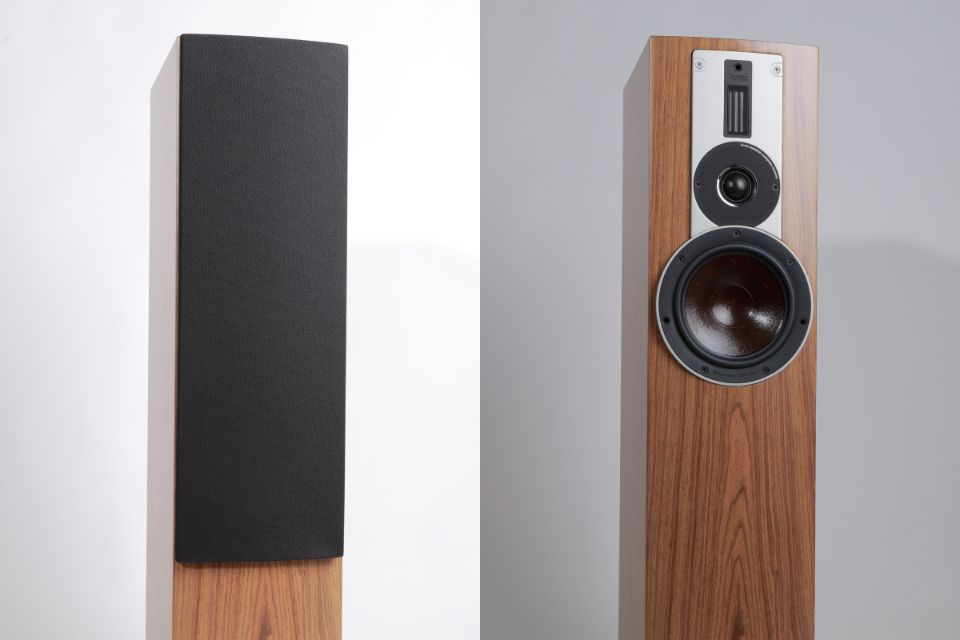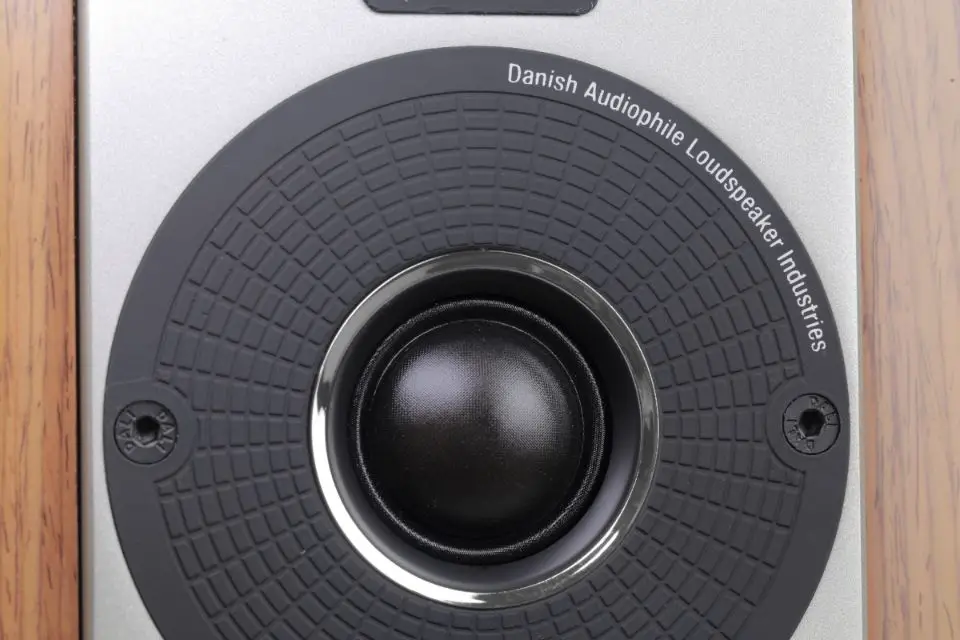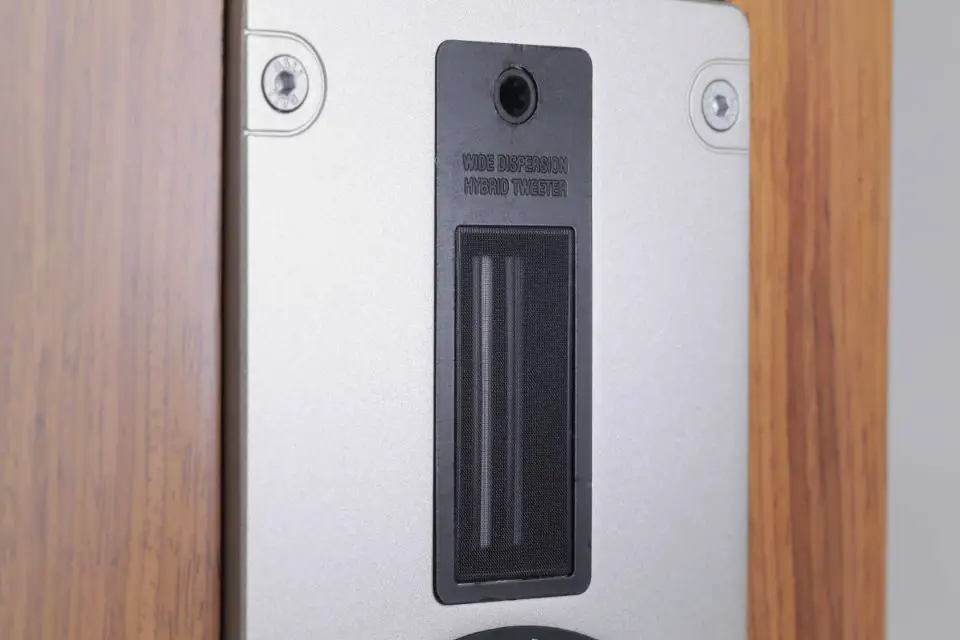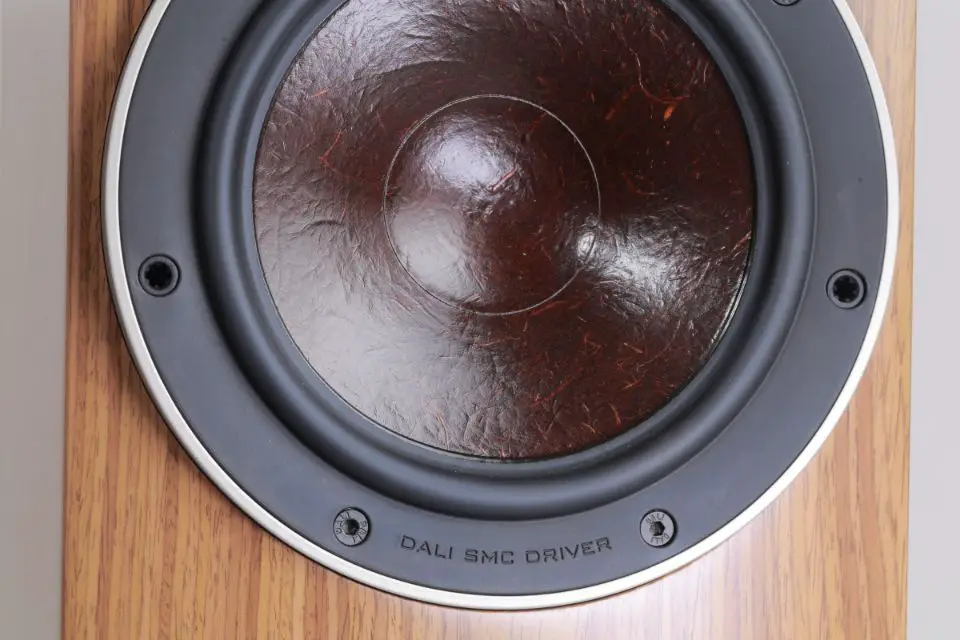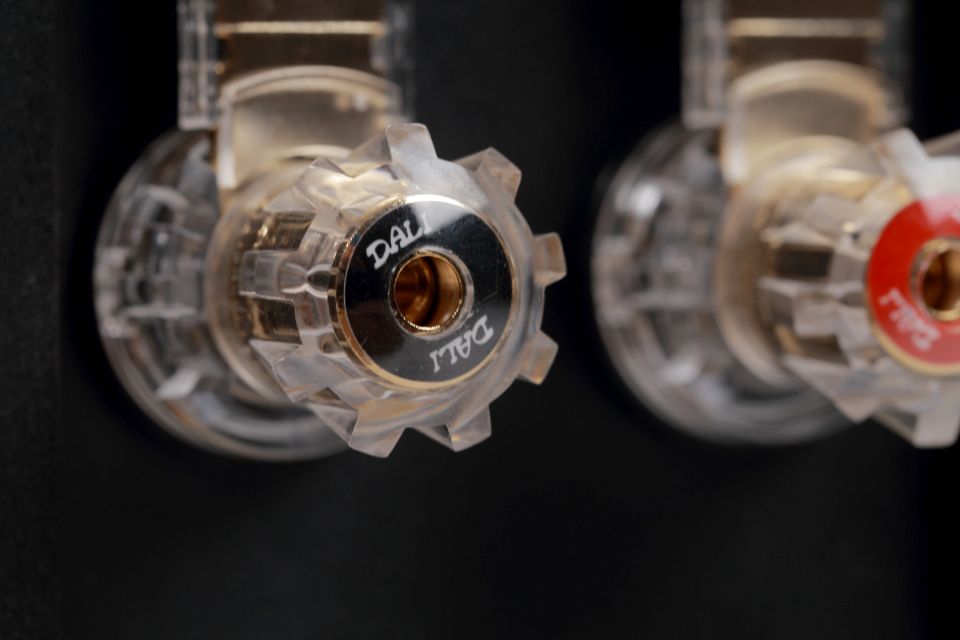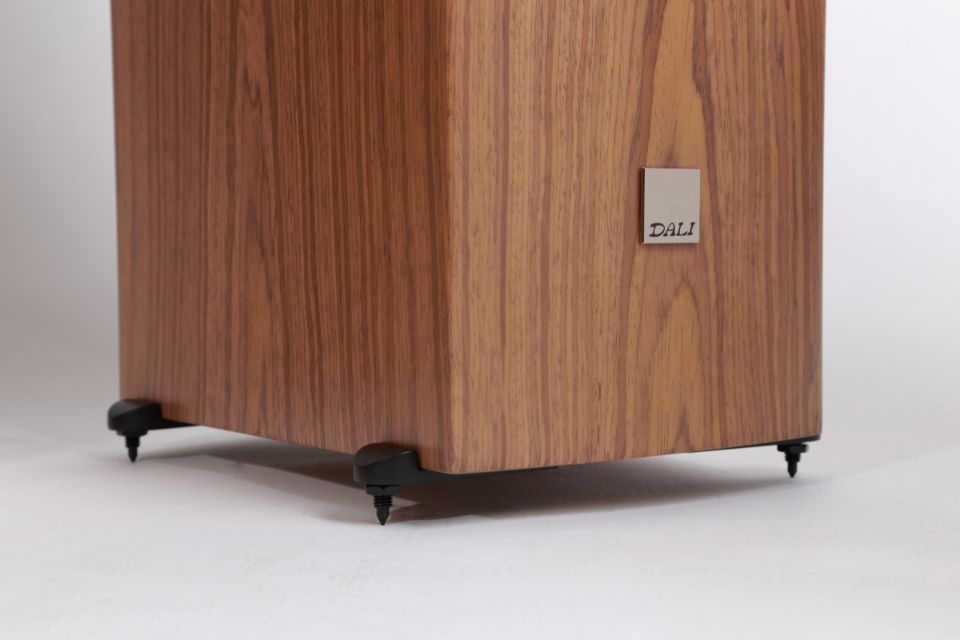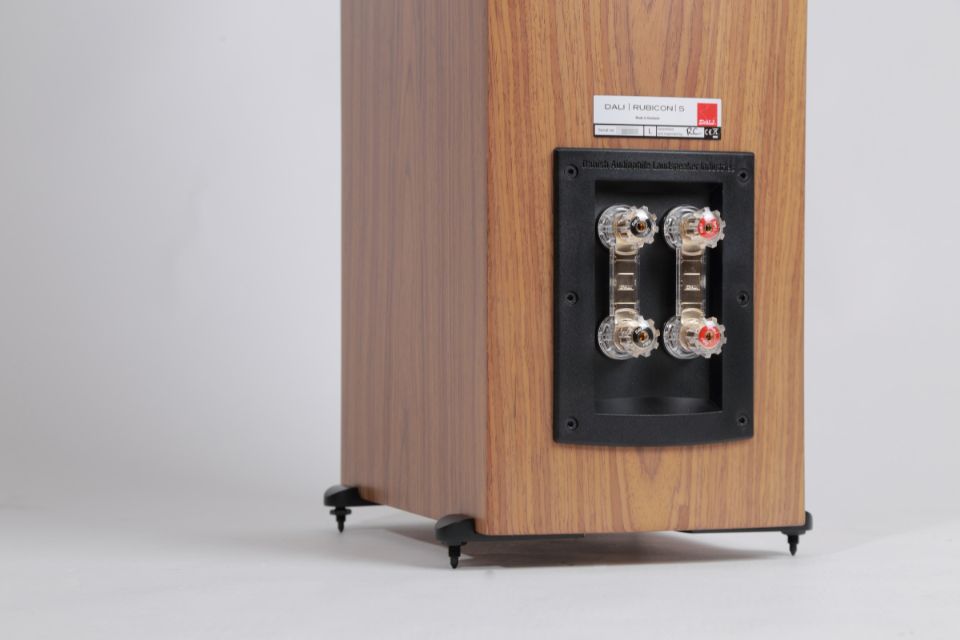Dali Rubicon 5 Review
Are there any speakers that are safe choices, which can deal with various types of music, easy to match with an amplifier? Yes, the first thing I thought of was Dali. So, if I choose the most recommended series among Dali speakers, I would recommend Dali Rubicon 5.
From the perspective of a global enterprise, Dali is certainly not a big audio company. However, with 150 employees and an annual output of 250,000 pairs of speakers, Dali is definitely not small in the current audio industry. That’s why I said that their products have consistency, which is quite rare.
Obviously, this company’s management is done very well, and it has a highly coordinated culture. That is why I said that Dali is a brand that reassures consumers. Not only the sound performance, but the brand itself is also trustworthy.
Design
There are a total of 3 floor-standing speakers in the Rubicon series. The largest Rubicon 8 has three bass woofers, Rubicon 6 has two bass woofers, and Rubicon 5 only has one bass woofer. However, these three Rubicons all inherit the classic design of the flagship Epicon series, which is its dual tweeter module.
Dual Tweeter
Dali Rubicon5 speaker’s dual tweeter module is composed of a 17×45 mm aluminum ribbon tweeter with a 29mm silk soft dome tweeter. In fact, a silky soft dome tweeter is enough. The soft silk dome tweeter used in Rubicon 5 is ultra-lightweight.
Not only does the diaphragm have a lightweight, but the voice coil is also changed to CCAW copper-clad aluminum wire, making the weight lighter and the reaction speed is faster. The bookshelf speaker Rubicon 2 in the series only uses this silky soft hemispherical tweeter, with a frequency response of up to 26kHz.
But in order to make the treble extension of Oberon 5 more beautiful, Dali added a ribbon tweeter so that the high-frequency extension can be as high as 34kHz. In addition, the aluminum ribbon treble responds faster, so it performs better. And the aluminum ribbon treble has excellent horizontal diffusion performance, allowing a more comprehensive listening range and is not limited to the sweet spot.
Dali allows the two treble units to be divided into each other, and the ribbon treble above 14kHz is given to play the role of a higher treble. In contrast, the frequency band below 14kHz to the mid-bass unit is responsible for the soft hemispheric treble.
This kind of design is not only seen in Dali, but Dali has been doing it for many years, and the company has full skill with it. They know how to do their best.
Wood Fiber Bass With SMC Technology
Dali Rubicon 5 floor-standing speaker uses only one mid-bass unit, which is responsible for all frequency bands below 2.9kHz. This mid-bass unit is also developed and manufactured by Dali. This wood fiber diaphragm is widely used in Dali speakers at all series, which has a lot to do with the consistency of their speakers.
Dali’s wood fiber diaphragm surface is uneven and very irregular if you look at it up close. So why not make it flat? In fact, this is exactly what Dali wants. They believe that the diaphragm should not only be light and hard but also avoid resonance.
So they used wood fibers of different lengths to make the diaphragm and made the surface uneven, thereby eliminating the resonance of the diaphragm itself and making the sound more pure.
But the real power of this mid-bass unit is not just the diaphragm. Instead, Rubicon’s mid-bass unit uses a technology called SMC.
In short, the full name of SMC is Soft Magnetic Compound, a magnetic powder formula specially developed by Dali to solve the hysteresis of a single magnet. Such SMC magnets have the characteristics of excellent magnetic permeability and extremely low conductivity. That feature can reduce the distortion of the unit during movement.
In addition, they also installed a copper cap in the center of the magnet, which is equivalent to a Faraday ring, helping to improve the inductance change of the voice coil, stabilizing its impedance characteristics, and make the amplifier easier to drive.
Other Feature
Dali Rubicon 5’s cabinet is also very solid. The box is made of an MDF board. The front baffle is as much as 25mm thick, and the single body is locked on such a thick baffle, so there is less vibration. There are chambers inside the cabinet to avoid interference between mid-high and low frequencies.
Rubicon 5 has only one mid-bass, so there is not much separation. If there are three basses like Rubicon 8, each internal bass is separated into a separate chamber. That is the reason why Rubicon 8 has three bass reflex holes behind it.
Although Dali Rubicon is simple, many design details still make people happy. For example, the front baffle is not flat, but curved. There is no acoustic reason for this. However, this is an extra layer of the construction, which means an extra layer of manufacturing cost.
The foot spike at the bottom is easy to install. The feet can be adjusted in height to fit the ground. The speaker’s binding post looks high-end, with the words Dali engraved on it. The large knobs feel good when turned, and even the metal jumper has a plastic insulating coating. These are all details, which show the company’s excellent design techniques.
Speaker Placement
Dali Rubicon 5 is very small. It is 89 cm high and weighs about 15 kg. Therefore, it is easy to move the speaker around. You can handle everything all by yourself. But how should the speakers be placed?
After several adjustments of the speaker, the distance between the two speakers was set at about 185 cm, without toed-in placement. According to DALI’s recommendations, Rubicon 5’s tweeter module is very diffuse and does not need to face the listener with toed-in.
When I first set up the placement, I pulled the speaker relatively open, about 2 meters, and left an inward angle of about 7 degrees. But I always felt that the sound thickness was not enough, and the mid-frequency was too thin. That is not the Dali I know.
Then I tried to narrow the spacing slowly and adjust the speakers to face forward without a toe-in. Sure enough, after several comparisons, it’s best to face forward. Not only is the treble more convergent, and the mid-frequency is emerging, the sound field is the deepest, and the stage feel is the most natural.
Sound Performance
The sound of Dali Rubicon 5 speaker is just as I thought. Compared with Rubicon 8 or Rubicon 6, the sound quality is closer to the bookshelf speakers. That is because it has enough low-frequency power so that music can show a considerable scale. But it does not obscure the beauty of the mid and high frequencies due to the low-frequency volume.
Relatively speaking, the sense of positioning and stage of Rubicon 5 has the features of the bookshelf speakers, and its bright high-frequency performance allows details to emerge. The music is glamorous and charming, and the overall tone is natural and neutral but with luster.
On the other hand, its low frequency is also sufficient. So whether you listen to pop, jazz, blues, rock, and roll, you will not feel regretful. And if you compare it with bookshelf speakers, Rubicon 5’s stability and overall sound looseness are better than bookshelf speakers. So it has the advantages of bookshelf speakers but does not have the disadvantages of bookshelf speakers.
The sound field is opened, and the vocals come lively. Listening to the live performance recording is wonderful. Take Marcus Miller’s tribute to Miles Davis’s “Tutu Revisited” album as an example. That is a live performance recording with excellent results and outstanding performance.
At the beginning of “Tomaas” the drums showed a sense of openness. The electronic synthesizer created a sound that looked like an aurora and was surrounded by air. Listening to that drum sound is strong and agile, and Rubicon 5 is fast enough to make the drum sound more decisive and sharp. The trumpet has a bright metallic texture, while the bass is full of grains.
Listen to Holly Cole’s album “Don’t Smoke in Bed”. A powerful bass appeared at the beginning of the first track, “I Can See Clearly Now”. If you switch to Rubicon 8, it will definitely sound better, but Rubicon 5 is enough. If you put Rubicon 5 on the TV cabinet in an ordinary living room and put it against the wall, the low frequency will be strengthened.
This record sounds relaxed and comfortable. The sound image with a loose feeling is without the oppressive feeling brought by high density. However, those details do not seem to be given less, and Holly Cole’s expression when singing also appears to be visible. “Get Out of Town” is the creation of Cole Porter. Rubicon 5 gives clean low frequencies without a muddy sound.
Conclusion
Dali Rubicon 5 floor-standing speaker is not big, but it has plenty of energy. The seemingly simple appearance, but hiding the technology decentralized from the flagship series. It can whisper softly and sing wildly. It can give you a lazy jazz night, and it can also play a passionate carnival.
Such speakers, placed in the living room, on both sides of the TV, are not obtrusive at all, suitable for IKEA. As I said at the beginning of the article, Dali is a reassuring brand, and Rubicon 5 is also reassuring.
Dali Rubicon 5 Specs
- Frequency Range (+/-3 dB) [Hz]: 45 – 34.000
- Sensitivity (2,83 V/1 m) [dB]: 86.0
- Nominal Impedance [ohms]: 4
- Maximum SPL [dB]: 107
- Recommended Amplifier Power [W]: 60 – 150
- Crossover Frequency [Hz]: 2,900 / 14,000
- Crossover Principle: 2½ + ½-way
- Hybrid tweeter module, Super high freq. driver, Quantity: 1 x 17 x 45 mm
- Hybrid tweeter module, Super high freq. driver, Diaphragm type: Ribbon
- Hybrid tweeter module, High frequency driver, Quantity: 1 x 29 mm
- Hybrid tweeter module, High frequency driver Diaphragm type: Soft Textile Dome
- Low frequency driver, Quantity: 1 x 6½”
- Low frequency driver, Diaphragm type: Wood Fibre Cone
- Enclosure type: Bass Reflex
- Bass Reflex Tuning Frequency [Hz]: 39.0
- Connection Input: Bi-Wiring
- Magnetic Shielding: No
- Recommended Placement: Floor
- Recommended Distance From Wall [cm]: 20 – 150
- Dimensions With Base (HxWxD) [mm]: 890 x 195 x 339
- Weight [kg]: 15.7
